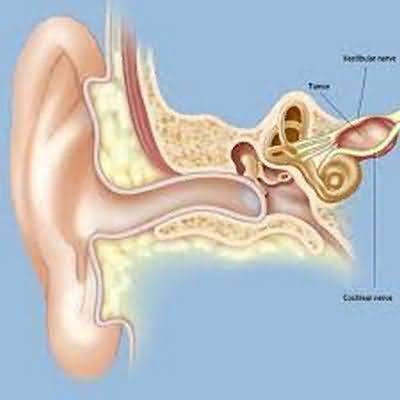vestibular schwannoma acoustic neuroma
vestibular schwannoma acoustic neuroma
Eighth cranial nerve schwannomas are among the most common intracranial tumors
Most are unilateral, but about 5% are associated with the hereditary syndrome neurofibromatosis type 2, in which bilateral eighth nerve tumors may be accompanied by meningiomas and other intracranial and spinal tumors
These benign lesions arise within the internal auditory canal and gradually grow to involve the cerebellopontine angle, eventually compressing the pons and resulting in hydrocephalus
Their typical auditory symptoms are unilateral hearing loss with a deterioration of speech discrimination exceeding that predicted by the degree of pure tone loss
Nonclassic presentations, such as sudden unilateral hearing loss, are fairly common
Any individual with a unilateral or asymmetric sensorineural hearing loss should be evaluated for an intracranial mass lesion
Vestibular dysfunction more often takes the form of continuous dysequilibrium than episodic vertigo
Diagnosis is made by enhanced MRI
Treatment consists of observation, microsurgical excision, or stereotactic radiotherapy, depending on such factors as patient age, underlying health, and size of the tumor
Bevacizumab (vascular endothelial growth factor blocker) has shown promise for treatment of tumors in neurofibromatosis type 2


















